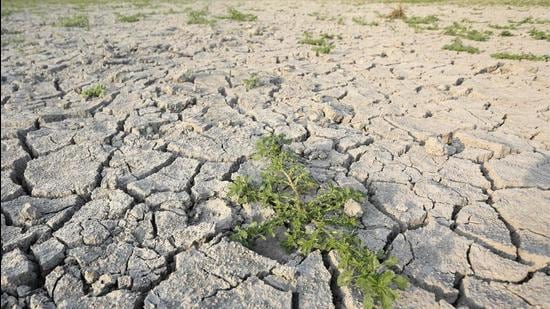Climate crisis: India now confronts a drought
The warnings from IMD and DEWS are significant and must induce strong and effective policy responses. Unlike other natural hazards such as cyclones and floods, droughts often develop gradually over a long period of time; they are “creeping disasters”
Drought-like conditions are setting in over most parts of Gujarat, west Rajasthan and some districts of Odisha that have recorded significant rain deficiency during the monsoon, according to Standard Precipitation Index (SPI) data for August maintained by the India Meteorological Department (IMD). SPI is an index used for monitoring droughts. This substantiates the recent report of the Drought Early Warning System (DEWS) that said over a fifth of India’s land area (21.06%) is under different degrees of drought (abnormally dry to exceptionally dry). Last year, the corresponding figure for the same period was 7.86%. DEWS is a real-time drought-monitoring platform maintained by Indian Institute of Technology, Gandhinagar.

Also Read | In India’s climate law, focus more on process, less on outcomes
The warnings are significant and must induce strong and effective policy responses. Unlike other natural hazards such as cyclones and floods, droughts often develop gradually over a long period of time; they are “creeping disasters”. The latest Intergovernmental Panel on Climate Change report, which was released earlier this month, has warned that the South Asian monsoon has weakened in the second half of the 20th century, mainly on account of human activity, and that rising temperatures could mean more droughts.
The gradual nature of droughts often prevents governments from recognising its deep long-term, socio-economic impact, often reducing the urgency that would otherwise trigger a timely and comprehensive response. India needs to expand the farm insurance net and ensure timely payouts, invest in greater adoption of micro-irrigation techniques, and introduce drought-resistant crops. These steps are important because droughts could further intensify farm distress (50% of the population is dependent on agriculture and more than 50% of the cultivable area rainfed), lead to over-extraction of groundwater, increase rural to urban migration, and intensify water conflicts between states and between farms, cities and industries. Effective drought-proofing, management and monitoring is the need of the hour.
All Access.
One Subscription.
Get 360° coverage—from daily headlines
to 100 year archives.



HT App & Website







